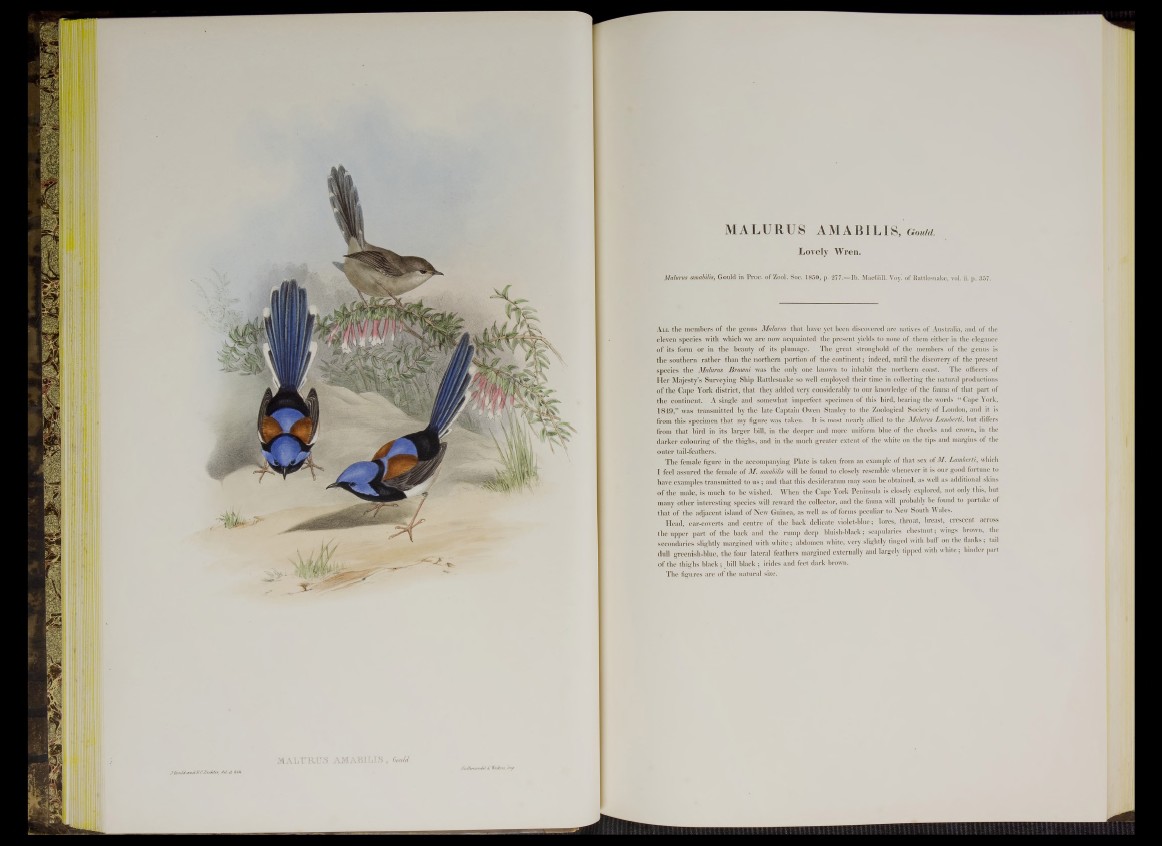
MALURUS AMABILIS, Gould.
Lovely Wren.
Mdlurus amabilis, Gould in Proc. of Zool. Soc. 1850, p. 277.—lb. MacGill. Voy". of Rattlesnake, vol. ii. p. 357.
All the members of the genus Malurus that have yet been discovered are natives of Australia, and of the
eleven species with which we are now acquainted the present yields to none of them either in the elegance
of its form or in the beauty of its plumage. The great stronghold of the members of the genus is
the southern rather than the northern portion of the continent; indeed, until the discovery of the present
species the Malurus Browni was the only one known to inhabit the northern coast. The officers of
Her Majesty’s Surveying Ship Rattlesnake so well employed their time in collecting the natural productions
of the Cape York district, that they added very considerably to our knowledge of the fauna of that part of
the continent. A single and somewhat imperfect specimen of this bird, bearing the words “ Cape York,
1849,” was transmitted by the late Captain Owen Stanley to the Zoological Society of London, and it is
from this specimen that my figure was taken. It is most nearly allied to the Malurus Lamberti, but differs
from that bird in its larger bill, in the deeper and more uniform blue of the cheeks and crown, in the
darker colouring of the thighs, and in the much greater extent of the white on the tips and margins of the
outer tail-feathers.
Tlie female figure in the accompanying Plate is taken from an example of that sex of M. Lamberti, which
I feel assured the female of M. amabilis will be found to closely resemble whenever it is our good fortune to
have examples transmitted to u s ; and that this desideratum may soon be obtained, as well as additional skins
of the male, is much to be wished. When the Cape York Peninsula is closely explored, not only this, but
many other interesting species will reward the collector, and the fauna will probably be found to partake of
that of the adjacent island of New Guinea, as well as of forms peculiar to New South Wales.
Head, ear-coverts and centre of the back delicate violet-blue; lores, throat, breast, crescent across
the upper part of the back and the rump deep bluish-black; scapularies chestnut; wings brown, the
secondaries slightly margined with white; abdomen white, very slightly tinged with buff on the flanks; tail
dull greenish-blue, the four lateral feathers margined externally and largely tipped with white; hinder part
of the thighs black; bill black; irides and feet dark brown.
The figures are of the natural size.